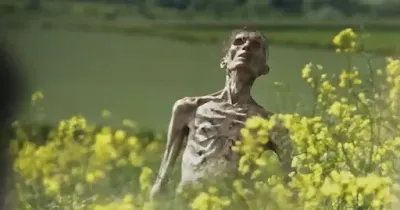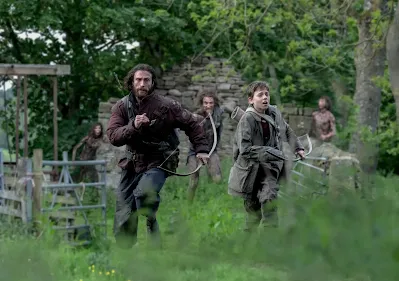Charles Dickens got it right.
Some hundred and eighty years ago, he wrote a passage in Oliver Twist describing a haunting:
He could trace its shadow in the gloom, supply the smallest item of the outline, and note how stiff and solemn it seemed to stalk along. He could hear its garments rustling in the leaves, and every breath of wind came laden with that last low cry. If he stopped it did the same. If he ran, it followed--not running too: that would have been a relief: but like a corpse endowed with the mere machinery of life, and borne on one slow melancholy wind that never rose or fell.
That sentence-- not running too: that would have been a relief-- is key. The undead are not in a hurry, they are never in a hurry; if they ever for once hurried that would break the tension.
That's what made George Romero's undead so unsettling, that touch of the supernatural. You can run, you can even fight back, you can mow them down like so much grass, but none of your responses or even your non-response ultimately matter; they know-- and you know-- that they will munch on you in the end. George Romero's undead are worse than confident they're indifferent, like the rising tide-- do what you will or do nothing the tide will rise past your nose no matter what you do.
And that's what I find risible about Danny Boyle's 'zombies:' they run, they scamper, they sprint as if afraid you'll get away. They have no confidence; they're pathetically insecure wimps compared to Romero's. They're ZINAs-- Zombies In Name Only, posers that work extra hard to earn some reputation for fearsomeness.
Behind the narrative logic there's storyteller's logic: running zombies as a threat is an easy way to create tension onscreen; the more artful goal is to evoke the kind of existential dread Dickens managed to create in the last chapters of Twist, and that Romero managed in all his Dead films, even the meanest budgeted and clumsiest examples.
And yes I know I know Boyle insists his aren't undead they're infected with the Rage virus, a detail that recategorizes his pictures as closer in spirit to Romero's The Crazies-- which I also prefer, for the cleaner more coherent more pointedly political filmmaking-- over Boyle's.
That's why I was never a fan of 28 Days Later; was even less of a fan of 28 Weeks Later; was mildly surprised to find 28 Years Later better than I expected, but still less than impressive. Boyle boasts of using using lightweight digital cameras in his first movie (in this production an array of IPhones) that allow\ for quick convenient filming but the net result are chase and fight sequences that feel phoned-in; the footage is too shaky the editing too frenetic to help you orient yourself and know what's really going on (recall Alfred Hitchcock's recipe for onscreen thrills: "whenever possible the public must be informed"). Any sense of suspense that might accumulate is quickly frittered away and lost.
O the movie isn't a total loss. The latter part involving Ralph Fiennes and Jodie Comer come off as unexpectedly fine; the times when Boyle manages to choke down a tranquilizer his camera takes to the air and gives us breathtaking shots of the northern English landscape-- recall that Boyle was chosen to orchestrate the 2012 Olympics, suggesting his style of smash-n-grab, occasionally pretentious lyricism, thicksmeared sentimentality is the official filmmaking style of the United Kingdom (apparently Ken Loach, Mike Leigh, and Terence Davis among others don't command enough boxoffice to qualify). I say 'sentimental' but in this case Boyle is kept nicely restrained by the sober presence of Ralph Fiennes (with able support from Jodie Comer and Alfie Williams) and the intellectual chill of Alex Garland. This is fairly valid mythmaking stuff, with a few cogent things to say about death and our response to it, and Boyle's filmmaking literally rises to the occasion, capping the movie with a clean-picked skull on a particularly tall tower of bone.
That latter name does give rise to the question: couldn't they have made Garland the director? The writer-filmmaker's more contemplative style would have perfectly suited the picture's latter half, made intriguing contrast with the picture's more frenetic first half (apparently the job was offered to Garland, who turned it down because he was exhausted from working on back-to-back projects).
Too bad-- a purely Garland picture would have made for an appropriately sober third chapter to this trilogy, no further sequels needed, but apparently the filmmakers saw fit to introduce a team of Power Rangers to the brew. Who's to blame for that last-minute insertion-- Garland? Boyle? Sounds more like Boyle's style (meanwhile noting that the fight sequences in the Power Rangers TV series were considerably more coherent than Boyle's) but Garland is human and capable of mistakes. Stay tuned for the next installment in the franchise.


No comments:
Post a Comment